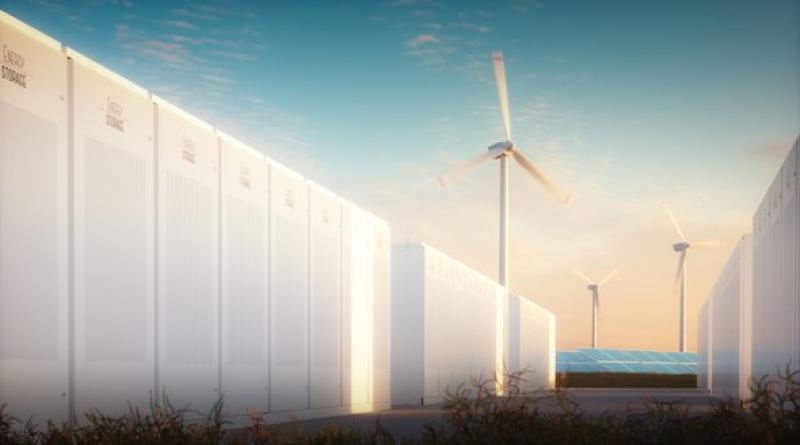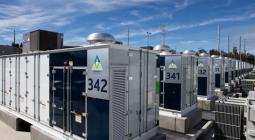How a Key Energy Technology Can Help Developing Countries.

The World Bank has a new program for financing the advanced battery storage systems essential for making wind and solar power work.
A global energy transition is under way. Its potential to redraw the landscape will be most profoundly felt in developing economies. These economies will be the key locations of growth and investment. Developing countries have already become the largest absolute source of energy demand, and they are far outpacing OECD countries in terms of growth. Similarly, investment in renewables is now also led by developing countries. Sub-Saharan Africa, home to a majority of the world’s population living with limited, poor quality or no electricity, will likely witness some of the most significant of these transformations.
What we can safely guess about the changing system is that it will include a large role for batteries for both electric vehicles and power storage. How governments respond will be essential, and the World Bank is responding with a focused, first-of-its-kind program to help.
The global energy storage (excluding pumped hydro) market is forecast to attract over $600 billion in investment over the next 20 years. Bloomberg New Energy Finance sees the market for both utility scale and “behind-the-meter” (on-site at businesses, industrial facilities, and homes) growing exponentially to reach about 7 percent of total installed capacity by 2040. This battery revolution is happening all over the world, and its rapid growth is due to both falling prices, and the many benefits to the electricity system, ranging from helping shift demand to enabling the integration of solar power to improving reliability.
The solar revolution has already had an impact. Many countries in Africa are rapidly deploying centralized, utility-scale systems, as well as decentralized, smaller systems that can power homes and businesses. These decisions are motivated by economics. The price of photovoltaics (PVs) has dropped roughly 80 percent over the last decade. Batteries can be deployed quickly and offer modularity—both very attractive qualities to the region.
As an example, countries in the Sahel such as Burkina Faso and Mali are developing regional solar parks that will serve as demonstration projects for other countries in West Africa. And the focus is not limited to residential uses. A priority is to power local agricultural processing, irrigation and light industry. A shift to a low-carbon and more secure energy future, lower operating costs and strengthening grids has multiple benefits to these countries ranging from economic and social development to security. Well-designed regulations are fundamental to realizing these benefits, and to ensuring they are realized in developing countries.
Battery storage systems are delivering reliable power at roughly a third of the cost of diesel generators, and have better supply chain resilience. There are other benefits as well: poor-quality and adulterated diesel is highly polluting and linked to major health impacts across the continent. The selling of diesel is also often tied with organized crime; consumers can pay even higher prices for fuel in poor communities where there is little monitoring.
Storage comes in many varieties. Energy storage can complement and, in some cases, replace transmission infrastructure projects, as well as diesel generators and gas power plants. Pumped storage has been in use for decades, but it is battery storage that is receiving the lion’s share of attention now as costs come down and technologies proliferate. The International Energy Agency (IEA), in its World Energy Outlook 2018,included for the first time the contribution of batteries to flexibility of power systems. By 2040 the IEA foresees a hundredfold increase in grid-connected battery additions compared to today.
Battery storage systems have already proven cost-effective in balancing supply and demand on a timescale of seconds. As a result, frequency swings are limited, there are fewer blackouts, operating costs go down, and system stability is enhanced for the benefit of all customers. In South Africa, the national utility Eskom is focused on developing battery storage capacity (the largest in the region) that will be used to enable the integration of current and future variable renewable energy capacity. The Gambia and the Central African Republic are looking to battery storage to help stabilize their fragile grids.
The coming boom in batteries promises another range of benefits, if managed right. Demand for the metals and minerals that are critical components in these next-generation batteries (such as cathode materials like lithium, nickel, manganese and cobalt) is expected to grow very fast—in some cases by almost tenfold by 2050—and large deposits of some of these are found in African countries. One of the largest challenges of Africa’s energy transition will be ensuring that the governance and management of extractive industries be strengthened so that the benefits of this coming boom are enjoyed by Africans, and that issues of sustainability and labor conditions in supply chains are addressed.
Last autumn, the World Bank Group committed $1 billion for a program to accelerate investments in battery storage in developing countries. Associated with this program is a new international partnership to help expand the use of energy storage and bring new technologies to developing countries’ power systems.
Recognizing the need to sustainably scale up the deployment of energy storage in developing countries and the significant opportunity that storage brings for increasing access to electricity and integrating more renewable energy, the Energy Storage Partnership (ESP) will foster international cooperation on: Technology Research Development & Demonstration, System Integration, and Policies and Regulations to help develop energy storage solutions tailored to the needs of developing countries.
To date, the investments have been small in scale, but significant in the nascent market. Globally, the bank has financed roughly 15 percent of the stationary battery storage capacity that is already deployed or currently under development—mostly through mini-grid projects and in island states to improve resilience. But now larger projects are being developed. For example, in Mali and Burkina Faso the bank is developing the largest solar parks in the region with PV-battery systems. These projects will combine standard tenders and de-risking instruments to attract private developers.
In some ways, the pace of the energy transition will be set by developing countries. So far, grid-scale battery technologies have been deployed primarily in OECD countries, but by sharing the lessons learned and showing the benefits of battery storage, this new solution should be a foundation of economic growth in the Global South.
25 April 2019
SCIENTIFIC AMERICA




